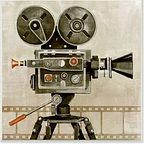The Godfather: Part One
The Godfather (1972), directed by Francis Ford Coppola, is a seminal work in the history of cinema. This iconic film, based on Mario Puzo’s novel, delves into the intricate world of the Italian-American Mafia, centering on the Corleone family’s patriarch, Don Vito Corleone, portrayed brilliantly by Marlon Brando.
The movie’s exploration of power, loyalty, and betrayal within the backdrop of organized crime resonated deeply with audiences, making it not only a box office success but also a cultural phenomenon.
Cinematography
Gordon Willis, the cinematographer for The Godfather, played an instrumental role in crafting the film’s visual language. Known for his distinct style, Willis collaborated closely with director Francis Ford Coppola to create a cinematic masterpiece. His contribution to the film’s aesthetics and storytelling cannot be overstated. Willis’s work on The Godfather not only elevated the film’s visual appeal but also set a benchmark for cinematography in the crime genre.
One of Gordon Willis’s signature elements in The Godfather was his expert use of low-key lighting, which bathed the film in shadows and darkness. This choice created an atmosphere of secrecy, tension, and foreboding, perfectly aligning with the film’s themes of organized crime and…
